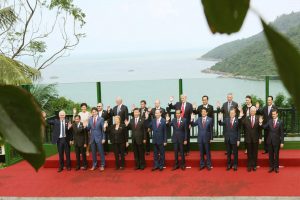Connectivity, regional cooperation key to growth in Central Asia

ASTANA, KAZAKHSTAN – Connectivity and regional cooperation remain critical to sustained economic growth in Central Asia and beyond according to the speakers at a seminar organized by Asian Development Bank .
The seminar,’ Links to Prosperity: Connectivity, Trade and Growth in Developing Asia,’ took place at ADB’s 47th Annual Meeting of the Board of Governors in Astana, Kazakhstan.
The debate focused on how connectivity can drive growth in Central Asia and beyond. Participants heard that economies in the region should work towards high-speed, quality transit corridors between economic centers. Others suggested this approach could be enhanced by adding value to goods in transit across the region.
The seminar also examined the relationship between physical infrastructure and the associated software of institutional and policy reforms.
“Roads and railways connecting the right places are critical, but just as important, and often far cheaper, is soft infrastructure such as customs agreements that help ensure the free flow of goods,” said Klaus Gerhaeusser, Director General of ADB’s Central and West Asia Department.
Regional connectivity is at the core of ADB’s development agenda. Under the Central Asia Regional Economic Cooperation (CAREC) Program, transport connectivity accounted for 80% of the total $22.4 billion of CAREC spending from 2001 to 2013.
Seminar participants discussed not only Central Asia, but also the diversity of experience across Asia and the Pacific. Transport also accounts for more than 80% of ADB’s lending under the Greater Mekong Subregion (GMS) economic cooperation program.
Road and rail connectivity is critical in most parts of Asia while in other places, particularly the Pacific, the priority is quality sea or air connectivity. Reliable, high speed information and communication technology may be more important in the context of trade in services. Connectivity through pipelines is critical for exports of oil and natural gas, particularly in energy-rich Central Asia. – ADB
May 5, 2014














